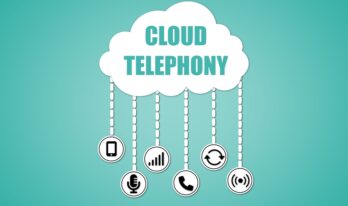Modern online marketing must recognize the power of data. Effectively harnessing user information from websites, apps, and digital platforms has become the cornerstone of successful marketing. In this comprehensive guide, we delve into the depths of first-party data (1P data) strategies, unraveling the intricacies of its collection and its indispensable role in the face of evolving data landscapes.
The Shifting Landscape of Data Collection
In the intricate web of online marketing, data is the currency that drives success. Various avenues – websites, apps, blogs, and more – serve as fountains of user data. In the past, data collection agencies have primarily relied on cookies to quench their thirst for consumer insights. However, the winds of change have swept through the digital realm. iOS opt-outs and Chrome's imminent cookie phase-out have propelled a paradigm shift toward first-party data collection.
Unveiling the First-Party Data Paradigm
First-party data stands as a beacon of user-centric data collection. Unlike its third-party counterpart, often gleaned from external sources, first-party data emerges directly from users' interactions with a business. This data goldmine encompasses email addresses for newsletters, discounts, and other forms of engagement where users willingly share information in exchange for value.
Diverse Channels, Singular Insights
The tapestry of first-party data collection is woven with myriad threads. From deep links that navigate users within apps to the downloading of apps themselves and even the footsteps they leave on websites, all contribute to this valuable trove. Such insights spotlight user behaviour, allowing businesses to craft highly-targeted advertising campaigns.
Understanding the Data Hierarchy
To master first-party data, it's essential to differentiate between the various data layers. Second-party data, a collaborative venture, involves sharing insights between businesses. Third-party data, now dwindling in importance, is sourced externally. However, the first-party data shines brightest, bestowed directly by users and forming the bedrock of customer-centric strategies.
Crafting Your First-Party Arsenal
Embarking on a successful first-party data journey requires an arsenal of well-calibrated strategies. Single Sign-On (SSO) emerges as a powerful tool, harnessing the might of Google and Facebook to simplify user access. Event-based tracking paints behavioural portraits, enhancing personalization. Surveys and polls delve into preferences, while content sharing expands reach, creating a win-win dynamic.
Weaving an Unbreakable Tapestry: Content Strategy and Engagement
Crafting a robust content strategy is a beacon of success in pursuing data excellence. Soliciting customer reviews and feedback is akin to mining gold – it yields linkable 1P data that unravels product nuances. Warranties and user registration provide direct entry points, further facilitated by QR codes for seamless access.
Profiling Users for Precision
Delving into user demographics is akin to fine-tuning a musical instrument – it ensures your marketing melodies resonate. User profiling extracts key insights, empowering businesses to tailor their strategies precisely.
Engagement: The Lighthouse of Success
Offering eBooks and newsletters as an exchange for data is a proven tactic, yet sustaining engagement is paramount. Enter lead-gen campaigns, particularly on LinkedIn and Facebook. By capturing consent-based 1P data, these campaigns forge pathways to authentic connections.
Navigating the Landscape of Best Practices
The landscape of first-party data is navigable with a compass of best practices. Consent management ensures ethical collection, while reliable data platforms serve as fortresses guarding integrity. Cross-channel activation kindles multi-faceted engagement as business and customer objectives harmoniously align.
Transparency: The Guiding North Star
A beacon of trust emerges through a transparent data usage policy. It illuminates responsible data handling, reassuring users of their security. Creating exclusive offers and loyalty programs occurs as a two-way street, encouraging users to share their data willingly.
Fortifying Your Data Citadel
Central to any data endeavour is a fortress of governance. Establishing a solid data governance policy safeguards integrity, ensuring ethical collection and utilization of user insights. First-party data, standing resolute, gains prominence as third-party data wanes.
The Path Forward: Building Your First-Party Arsenal
Constructing an effective user data collection system is paramount to flourish in dynamic data ecosystems. Online properties are fertile grounds, and customer data platforms are the architect's blueprint for precision-targeted marketing.
Conclusion: Unleash the Power of First-Party Data
In a landscape where data reigns supreme, the prowess of first-party data strategies is indisputable. Businesses forge a future steeped in relevance, trust, and unparalleled success by harnessing user interactions and fostering genuine connections. The key to ascending these summits lies in embracing first-party data, an invaluable asset that empowers businesses to meet and exceed their audiences' expectations.
You may also like to Read:
Discover the Importance of B2B Intent Data: A Comprehensive Guide to Achieving Business Success




